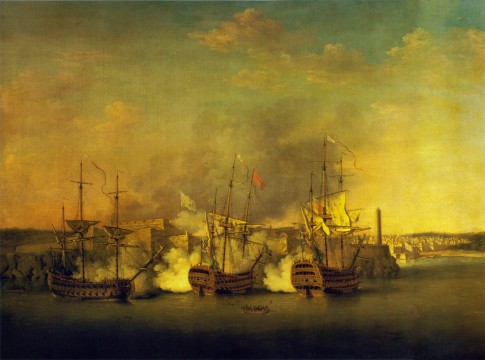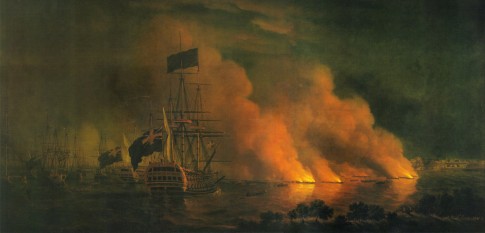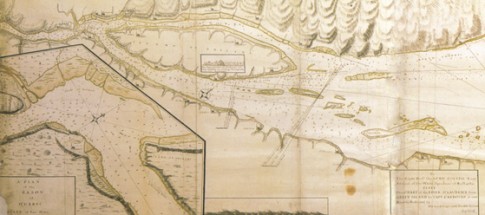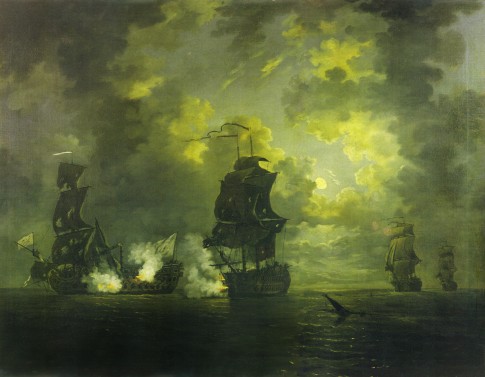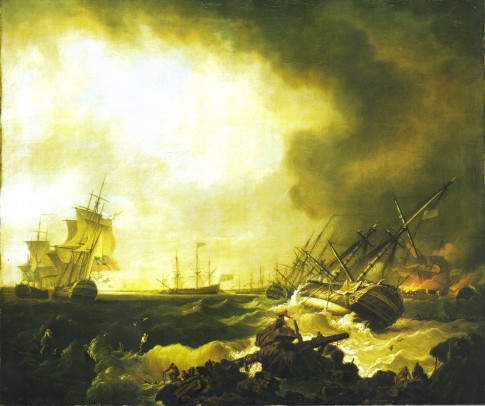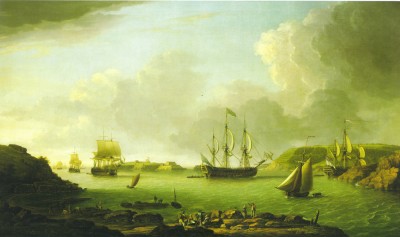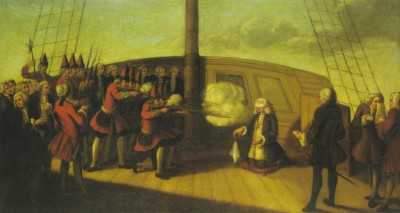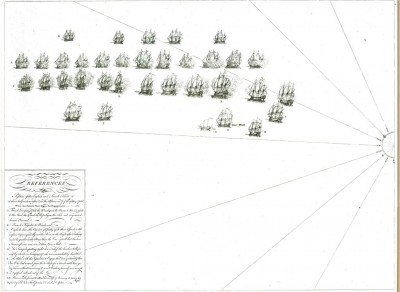BOMBARDMENT ON THE MORRO CASTLE, 1 JULY 1762
By Richard Paton, mid-18th century
(Highest resolution available 4500×3340)
In 1761 Spain entered the war, and Britain immediately planned operations against her colonies. An amphibious assault on Havana, the most significant Spanish settlement in the Americas, with a naval base, a dockyard producing quality ships made of tropical hardwood and a permanent squadron of warships, was settled upon. Havana was a formidable target defended by the Morro Castle, and three British warships, the 80-gun Cambridge, the 70-gun Marlborough and the 74-gun Dragon were sent to attack it in an action shown in this painting. Currents near shore always run fast and to attack a static, heavily defended shore battery from the unpredictable and shifting element of the sea was always difficult. On this occasion the guns of the Morro Castle were well manned and well aimed and the British ships were badly mauled and forced to retreat. A further attack had been landed upstream of the castle. The walls were breached and the castle taken by storm, but not before time. Thousands of British sailors and soldiers died from tropical disease. At the close of the war Havana was restored to Spain, but in return the island of Minorca, so crucial to British interests and so easily thrown away by Byng at the start of the war, was returned to Britain.
